Abstract
Methylprednisolone sodium succinate was administered to New Zealand white rabbits sensitized with BCG in an attempt to define the effect of corticosteroid upon the interactions of lymphocytes and macrophages in the afferent and efferent limbs of delayed hypersensitivity. Daily intramuscular administration of the corticosteroid, beginning simultaneous with BCG sensitization of rabbits, prevented the inhibition of macrophage migration following tuberculin challenge 14 days after sensitization. If corticosteroid administration was delayed until 10 days following sensitization with BCG, the expected inhibition of macrophage migrations followed tuberculin challenge.
Purified lymphocytes obtained from sensitized rabbits not treated with corticosteroid, when added in vitro to cells isolated from rabbits treated with methylprednisolone from the time of sensitization, re-established the expected inhibition of macrophage migration. In contrast purified lymphocytes obtained from animals treated with corticosteroid from the time of BCG sensitization did not elaborate a factor which inhibited macrophage migration.
Excluding direct effects upon blood vessels, these observations suggest that the afferent rather than the efferent stage of delayed hypersensitivity is suppressed by corticosteroid.
Full text
PDF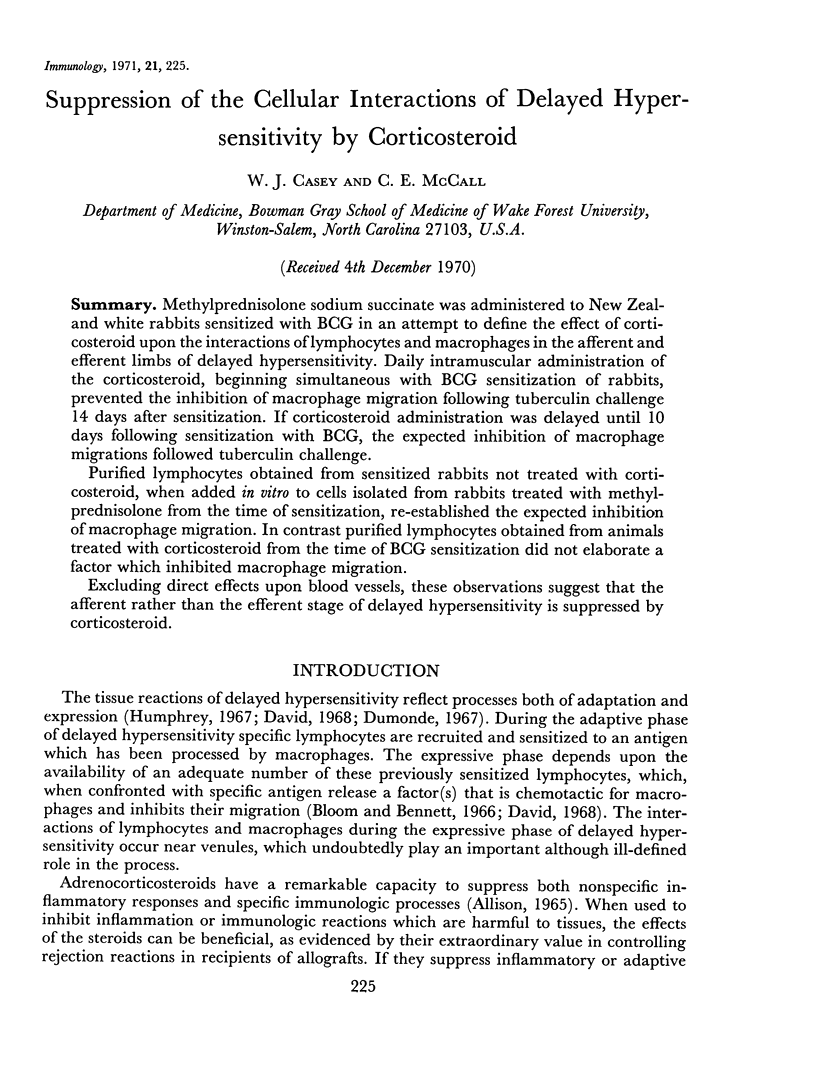
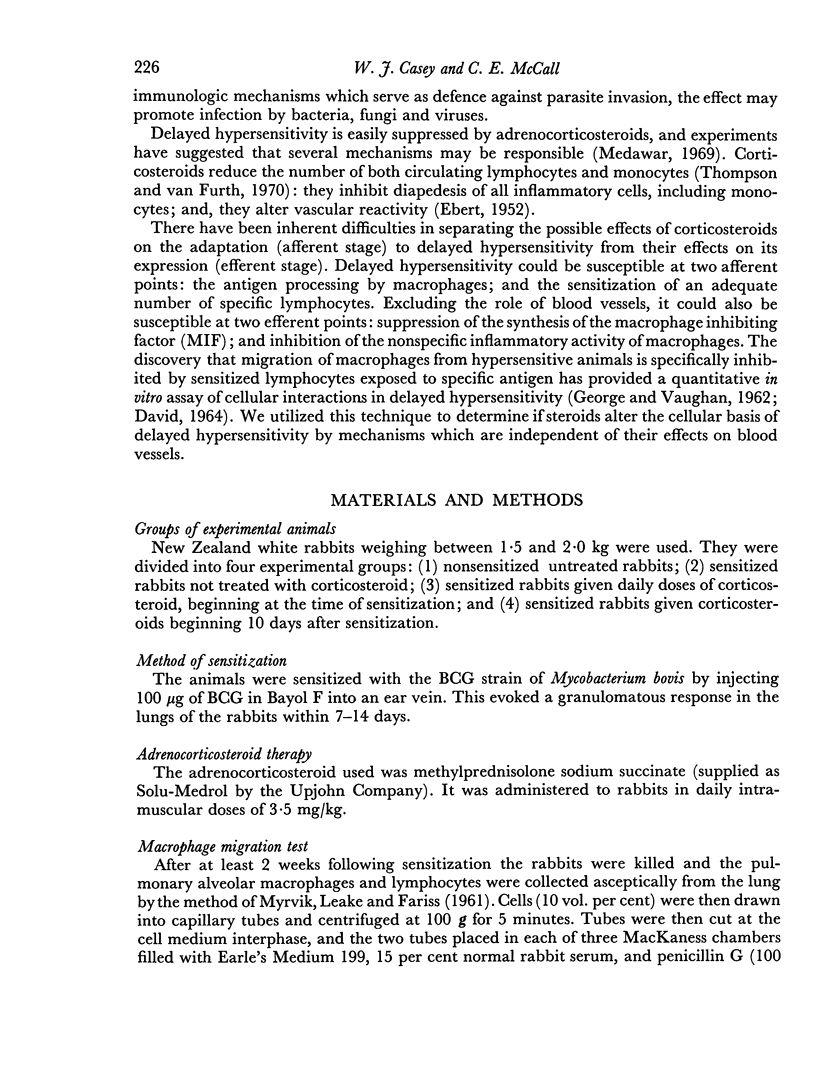
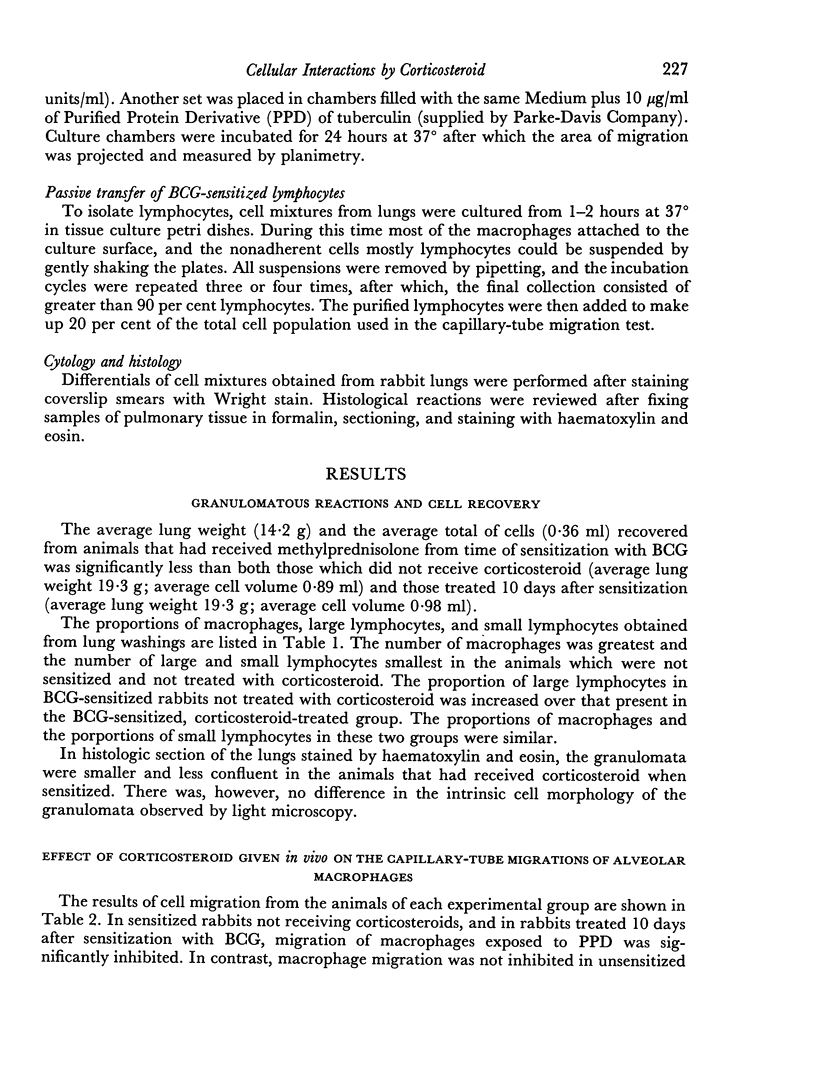
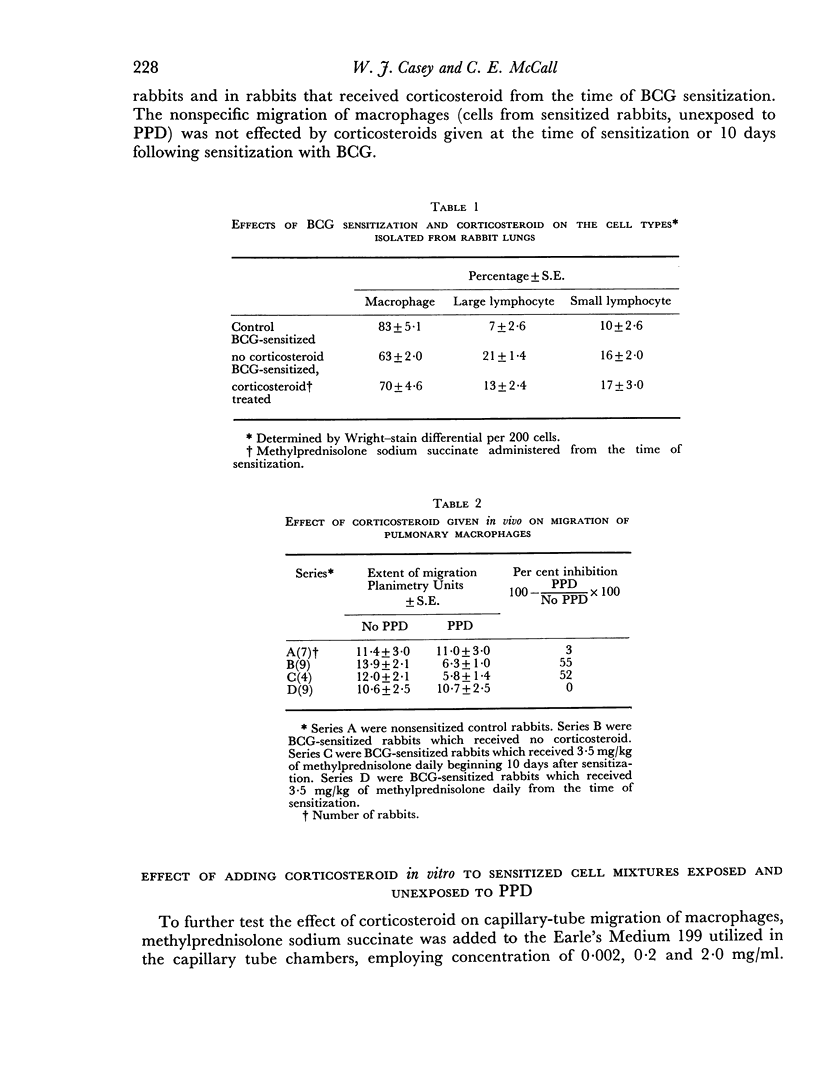
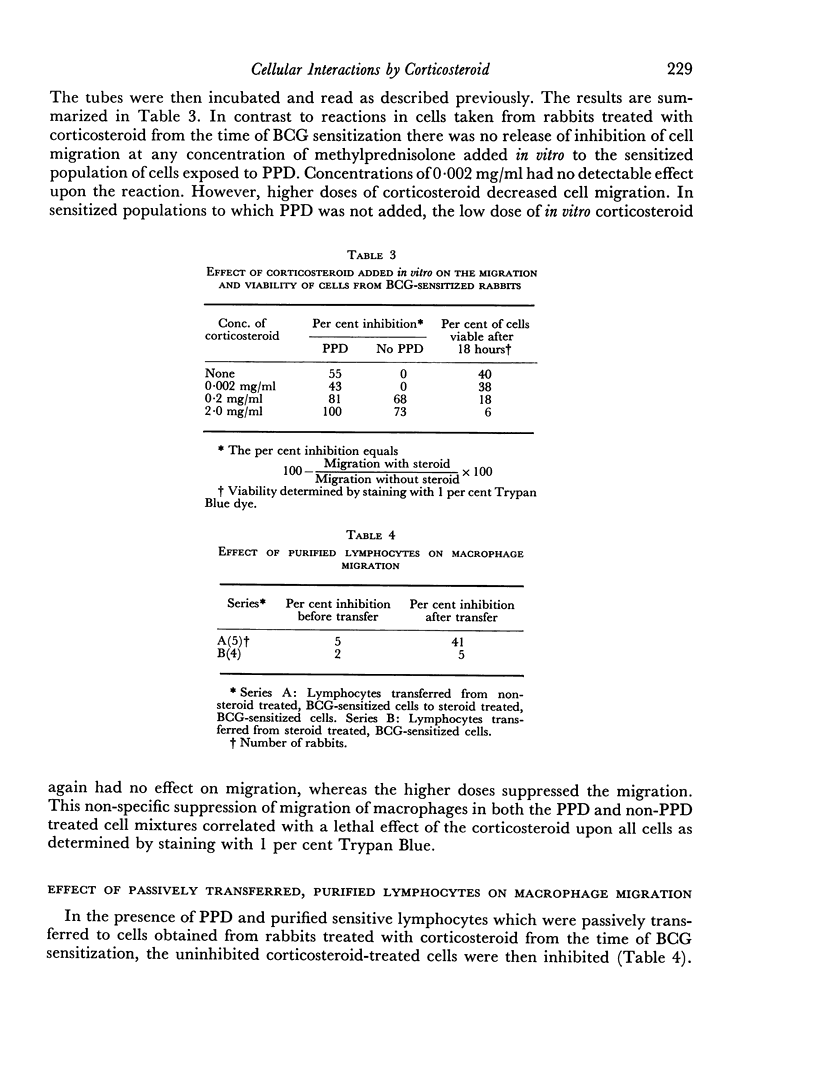


Selected References
These references are in PubMed. This may not be the complete list of references from this article.
- Bloom B. R., Bennett B. Mechanism of a reaction in vitro associated with delayed-type hypersensitivity. Science. 1966 Jul 1;153(3731):80–82. doi: 10.1126/science.153.3731.80. [DOI] [PubMed] [Google Scholar]
- DAVID J. R., AL-ASKARI S., LAWRENCE H. S., THOMAS L. DELAYED HYPERSENSITIVITY IN VITRO. I. THE SPECIFICITY OF INHIBITION OF CELL MIGRATION BY ANTIGENS. J Immunol. 1964 Aug;93:264–273. [PubMed] [Google Scholar]
- David J. R. Macrophage migration. Fed Proc. 1968 Jan-Feb;27(1):6–12. [PubMed] [Google Scholar]
- Dumonde D. C. The role of the macrophage in delayed hypersensitivity. Br Med Bull. 1967 Jan;23(1):9–14. doi: 10.1093/oxfordjournals.bmb.a070524. [DOI] [PubMed] [Google Scholar]
- EBERT R. H. In vivo observations on the effect of cortisone on experimental tuberculosis, using the rabbit ear chamber technique. Am Rev Tuberc. 1952 Jan;65(11):64–74. doi: 10.1164/art.1952.65.1.64. [DOI] [PubMed] [Google Scholar]
- GEORGE M., VAUGHAN J. H. In vitro cell migration as a model for delayed hypersensitivity. Proc Soc Exp Biol Med. 1962 Nov;111:514–521. doi: 10.3181/00379727-111-27841. [DOI] [PubMed] [Google Scholar]
- Gabrielsen A. E., Good R. A. Chemical suppression of adaptive immunity. Adv Immunol. 1967;6:91–229. doi: 10.1016/s0065-2776(08)60522-2. [DOI] [PubMed] [Google Scholar]
- Humphrey J. H. Cell-mediated immunity--general perspectives. Br Med Bull. 1967 Jan;23(1):93–97. doi: 10.1093/oxfordjournals.bmb.a070525. [DOI] [PubMed] [Google Scholar]
- Levine M. A., Claman H. N. Bone marrow and spleen: dissociation of immunologic properties by cortisone. Science. 1970 Mar 13;167(3924):1515–1517. doi: 10.1126/science.167.3924.1515. [DOI] [PubMed] [Google Scholar]
- MYRVIK Q., LEAKE E. S., FARISS B. Studies on pulmonary alveolar macrophages from the normal rabbit: a technique to procure them in a high state of purity. J Immunol. 1961 Feb;86:128–132. [PubMed] [Google Scholar]
- Medawar P. Review lecture. Immunosuppressive agents, with special reference to antilymphocytic serum. Proc R Soc Lond B Biol Sci. 1969 Nov 18;174(1035):155–172. doi: 10.1098/rspb.1969.0086. [DOI] [PubMed] [Google Scholar]
- Thompson J., van Furth R. The effect of glucocorticosteroids on the kinetics of mononuclear phagocytes. J Exp Med. 1970 Mar 1;131(3):429–442. doi: 10.1084/jem.131.3.429. [DOI] [PMC free article] [PubMed] [Google Scholar]


